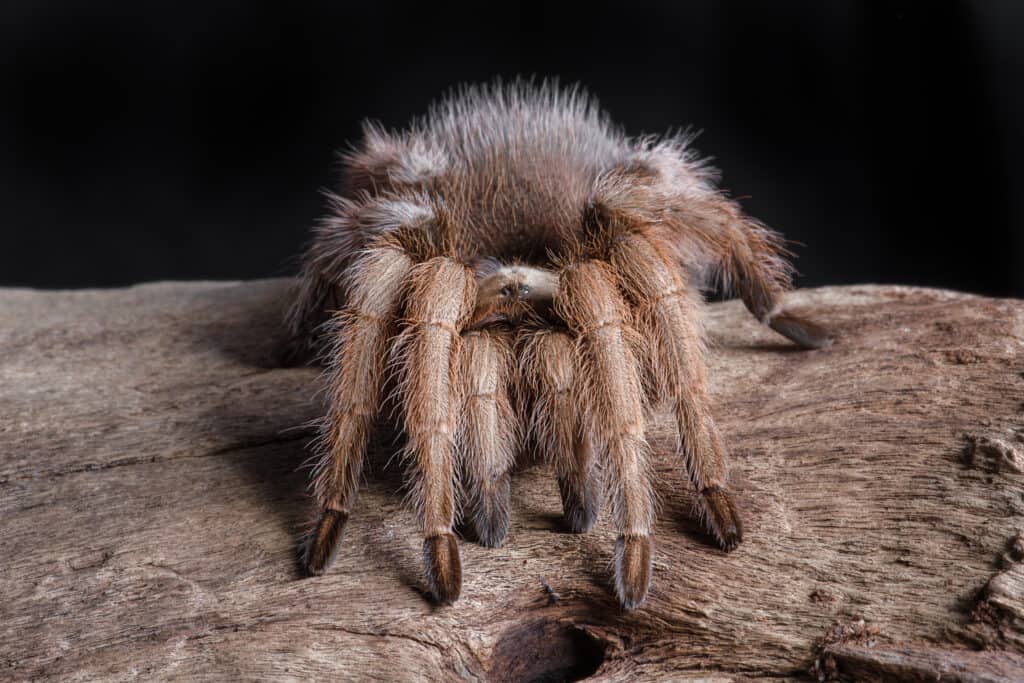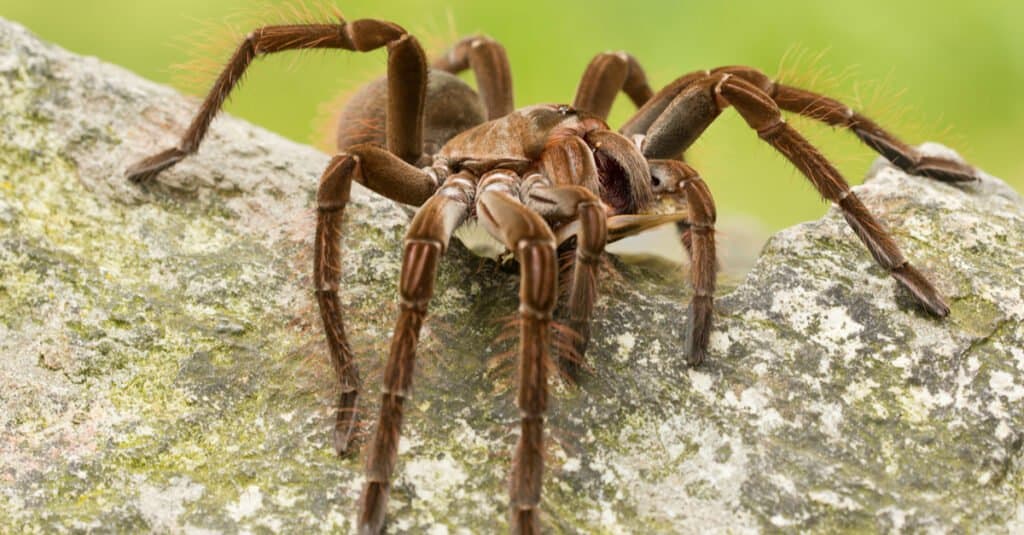There are four different types of tarantulas found throughout Colorado and they begin their annual tarantula migration or ‘walkabout’ every fall. The male tarantulas start to leave their burrows in late August and begin their journey until early October in search of females to mate with.
They will wander up to a kilometer to look for female tarantulas in their burrows, which is quite far for a slow-moving spider to travel. During this time, you are more likely to run into one of these arachnids in Colorado, more specifically in La Junta and southeastern Colorado.
The annual showcase of male tarantulas has become a tourist attraction in La Junta, where spectators may be lucky enough to see the mass of docile male tarantulas searching for females.
A Risky Love Affair – The Reason Behind Colorado’s Tarantula Migration

Male tarantulas go in search of females every fall
©Alan Tunnicliffe/Shutterstock.com
Male tarantulas in Colorado go on mass walkabouts in search of females which is triggered by the temperature drop as summer ends in Colorado. This migration period lasts for around 3 months and begins during mating season.
The Comanche National Grassland in La Junta, Colorado is a great place to witness the annual tarantula migration where thousands of mature male tarantulas of various species can be seen walking long distances to find a suitable female to mate with.
It is very rare to see these beautiful tarantulas leave the safety of their burrows, but the male tarantula will travel far distances to prove his love. Male tarantulas seek out a female when they reach adulthood and become mature between four to eight years of age and need to mate because once a male tarantula is mature, they typically do not live till winter.
This makes it important for the males to search far distances for a mate, however, it is quite risky. Female tarantulas tend to fight or eat their mates and will not always accept a male even after the long journey he has been through to get to her. Many male tarantulas that partake in this journey will not make it out alive, however, their efforts are usually successful, and the egg sacks will hatch in the next two months.
4 Species Of Tarantula In Colorado

Texas Brown Tarantulas are one of four species that are found in Colorado
©texas brown tarantula/Shutterstock.com
The four species of tarantula found in Colorado belong to the aphonopelma genus, which is native to the Americas. They are large tarantulas that can grow up to 5 inches for males, and 6 inches for females. The male tarantulas of this genus partake in the annual migration in Colorado and make quite a spectacular scene.
- Colorado chocolate brown tarantula (Aphonopelma echinum)
- Oklahoma brown tarantula (Aphonopelma hentzi)
- Grand canyon black tarantula (Aphonopelma marxi)
- Texas brown tarantula (Aphonopelma coloradanum)
These tarantulas in Colorado range in color from brown to black, with slightly lighter urticating hairs on their bodies, and some species, have distinctive banding on their legs. The males that can be seen most active during the annual migration have long legs and shrunken abdomens, meaning that they are mature.
The female looks similar in size; however, they have shorter legs and a thicker body with a plump abdomen. If you come across a tarantula walking around during the fall season in Colorado, it is most likely a male.
The species a. marxi used to be considered the a. volgelae, however, they are now used to describe the same tarantula.
Do Tarantulas Migrate?

Tarantulas don’t actually migrate – the males just go looking for a mate
©Milan Zygmunt/Shutterstock.com
Tarantulas do not actually migrate, but instead go on a walkabout. Migration refers to seasonal movements from one region to another, but this is not the reason tarantulas can be seen in large groups in Colorado, instead, the term migration is used to describe the male tarantulas walking up to a kilometer in search of a female during mating season and they are not truly migrating as the term suggests.
Maia Holmes, an entomologist from the College of Agricultural Sciences Department of Agriculture Biology said that it is important to understand what migration is, as it is not accurate to call the tarantula’s movements a migration. Instead, Maia says it is more of a walkabout that makes the male tarantulas more visible during the end of the year.
The male tarantulas will locate a female burrow and drum on the ground to signal that he is ready to mate, if successful the female will allow them to mate, the male tarantula would be lucky to survive the encounter.
Conclusion
If you are in Colorado and are lucky enough to witness the mass of male tarantulas throughout southeastern Colorado, then it is important to make sure that you take caution when driving or hiking to prevent injuring one of the tarantulas. Since the males will be more active during this time, you are more likely to come across one.
These slow-moving creatures may cross roads and pathways, so always be on the lookout. If you come across a tarantula during the “migration” period, let them be and know that they are not looking to harm you and are quite peaceful.
Up Next…
- “10 Common Brown Spiders in California”
- “Discover 3 Incredible Tarantulas in Arizona”
- “Tarantula Hawk Vs Tarantula: Who Would Win In A Fish?”
The photo featured at the top of this post is © Alan Tunnicliffe/Shutterstock.com
Thank you for reading! Have some feedback for us? Contact the AZ Animals editorial team.







